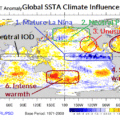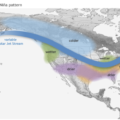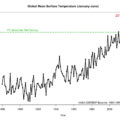MANILA – As the country braces for the onset of La Niña by October, experts from the Food and Agriculture Organization of the United Nations (FAO) and the Department of Agriculture (DA) convened a National La Niña Action Planning Workshop to cushion the agriculture sector from potentially devastating impacts.
The Philippine Atmospheric, Geophysical and Astronomical Services Administration (PAGASA) activated La Niña Watch in May and has warned of possible flooding in low lying agricultural lands, extensive damage to standing crops, increase in pest and disease and coastal erosion due to strong waves and coastal flooding, among others.
“We have just experienced one of the strongest El Niño episodes in history and hopefully learned important lessons on preparedness and response. Supporting the government in reducing risks to agricultural livelihoods and food security, and planning for immediate recovery as these relate to La Niña is a priority for FAO,” said FAO Representative in the Philippines José Luis Fernández.
“We hope that this collaborative exercise will result in an effective National La Niña Action Plan for the agriculture sector and promote even stronger efforts to mobilize early warning, early action, early recovery and rehabilitation resources,” he added.
Over 60 technical experts from DA, representing nine regions of the country, participated in the action planning from 8 to 9 June 2016. FAO provided technical support in the conduct of vulnerability assessments, identification of priority interventions and financial planning.
“We were able to identify the specific municipalities that are most at-risk in each region based on historical data, as well as the types of interventions to put on the ground, across the entire Disaster Risk Reduction and Management (DRRM) chain. This includes preparedness, response, immediate recovery and rehabilitation,” said Engr. Christopher Morales of the DA – Field Operations Service.
PAGASA also emphasized that more rainfall is to be expected in the eastern side of the Philippines as an effect of La Niña. Current forecasts indicate that this may affect Quezon Province and Bicol Region in Luzon; Samar and Leyte provinces in the Visayas; Davao Oriental and Compostela Valley provinces and the CARAGA Region in Mindanao.
“In some areas, we are looking into early planting or focusing on promoting other crop varieties that can withstand unfavourable weather conditions or those that can be harvested more quickly to provide farming communities with income and food even before Niña hits. We are also studying the associated funding requirements to support as many communities as early as possible,” Morales added.
The first draft of the National La Niña Action Plan for the Agriculture Sector will be completed by the end of June.
“We hope that this effort would result in timely and appropriate interventions that will continue to increase the resilience of farmers and fisherfolk in the Philippines,” Fernández said.
In 2015, FAO also assisted DA in the formulation of a National Disaster Risk Reduction and Management Plan for Agriculture and Fisheries. The final report, which is due to be published this year, will help guide the mainstreaming of DRRM and Climate Change Adaptation into national and local policies and plans.
Categories: Food Security








